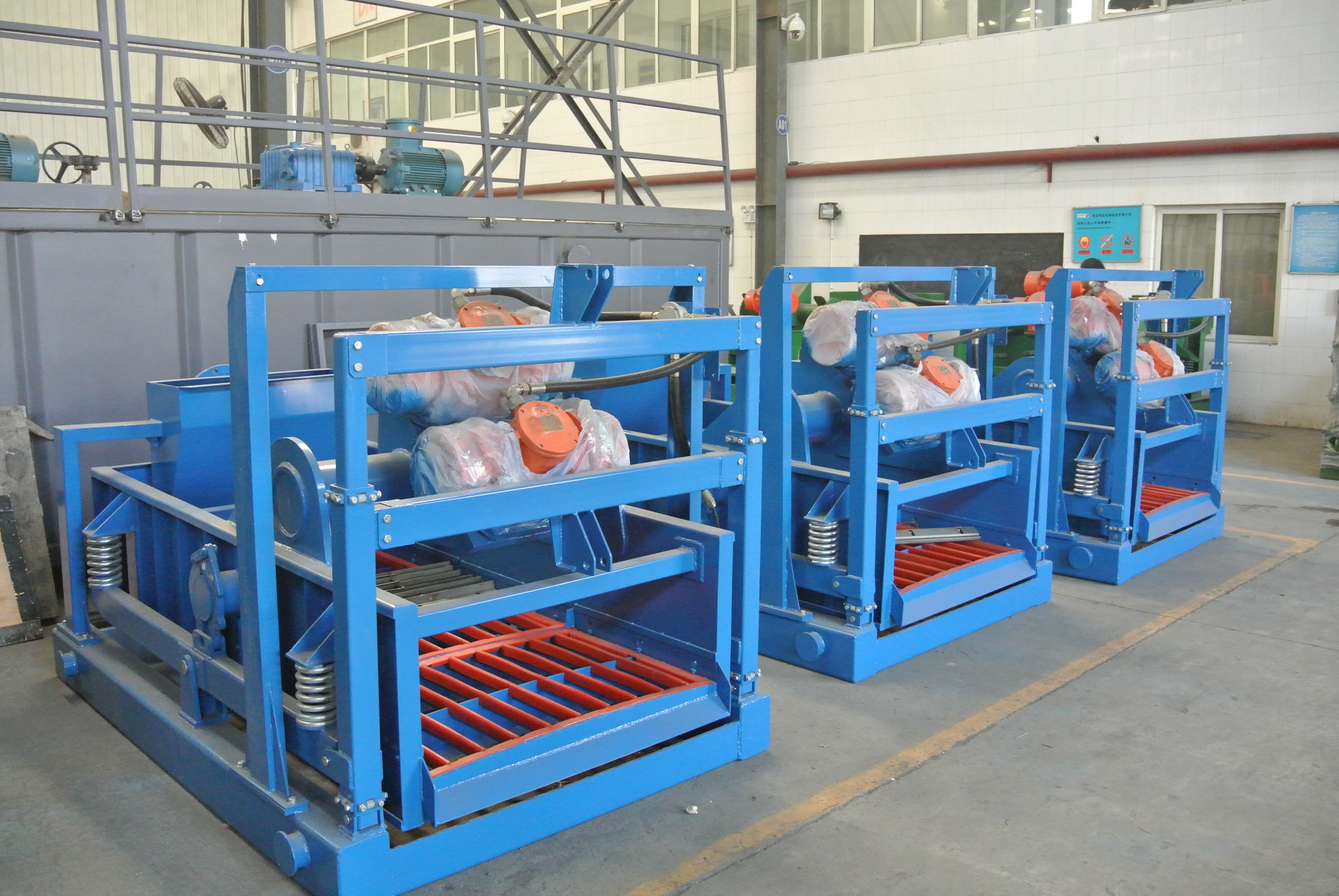

WHAT ARE THE POSSIBLE FAULTS OF DRILLING FLUID SHALE SHAKER? AND HOW TO FIX IT.
Pub Date:Dec 10, 2024 | Views:100 |
WHAT ARE THE POSSIBLE FAULTS OF DRILLING FLUID SHALE SHAKER? AND HOW TO FIX IT.
1. POSSIBLE FAILURES OF THE DRILLING FLUID SHALE SHAKER INCLUDE ABNORMAL MATERIAL FLOW ON THE SCREEN SURFACE.
This could be due to insufficient rigidity of the screen box, loose connection bolts, or even complete loosening. Another possible cause is the incorrect horizontal alignment of the screen box, which can be addressed by identifying faults in the support seat or the springs themselves and replacing the springs or adjusting the support seat size. Additionally, damaged screen mesh can cause abnormal material flow and can be resolved by simply replacing the screen mesh. If the insufficient rigidity of the screen box and incorrect horizontal alignment persist, it may lead to beam fracture and further abnormal material flow. Improper operation, such as imbalanced feeding, can also be a contributing factor.

2. DRILLING FLUID SHALE SHAKER FAILS TO START OR HAS A SMALL AMPLITUDE.
If the drilling fluid shale shaker fails to start or has a small amplitude, first check for any electrical obstacles, damage to the vibration motor, or faulty components in the circuit. If there are no issues in these areas, inspect the mechanical aspects. Accumulation of material on the screen surface can hinder its operation, in which case it should be cleared. Check if there are any loose coupling bolts on the exciter or if the lubricating grease has thickened or solidified. Cleaning and maintenance of the exciter may be necessary, followed by adjusting the position of the eccentric axis or the auxiliary eccentric block.
3. CRACKS IN THE SIDE PLATE, FRACTURE OF THE BEAM, AND DAMAGE TO STRUCTURAL COMPONENTS IN THE DRILLING FLUID SHALE SHAKER.
Cracks in the side plate, fracture of the beam, and damage to structural components in the drilling fluid shale shaker usually occur after prolonged operation at critical frequencies. This can be caused by the loosening of high-strength bolts that secure the side plates, severe deformation of the springs resulting in significant height differences on the left and right sides, or excessive weight deviation in the eccentric blocks. Damaged components, cracked wall plates, and even beam fractures should be addressed by replacing the damaged parts, tightening bolts, and when repairing cracked wall plates, drilling two 6mm holes at both ends to prevent crack extension. When adding reinforcement plates, it is important to create vent holes on the plates.
4. THE ROTATION OF THE DRILLING FLUID SHALE SHAKER SLOWS DOWN AND THE BEARINGS OVERHEAT.
If the rotation of the drilling fluid shale shaker slows down and the bearings overheat, it indicates inadequate maintenance, such as insufficient lubricating grease in the bearings. If newly added grease is causing the issue, it may be due to poor grease quality or overfilling. Low-quality grease can block the labyrinth seal, resulting in bearing obstruction. Therefore, the quality of the lubricating grease is crucial.
5. POOR SCREENING QUALITY IN THE DRILLING FLUID SHALE SHAKER.
Poor screening quality in the drilling fluid shale shaker can be attributed to various improper operations, such as clogged mesh, increased fine particles and moisture in the feed material, and excessively thick material layer on the screen. Loose tension on both sides of the screen mesh could also be a cause. If it is due to eccentric vibration, it may be caused by weak belt traction or loose belt. Once mechanical issues are resolved, a period of reverse rotation can be beneficial to improve screening quality.
6. EXCESSIVE NOISE IN THE DRILLING FLUID SHALE SHAKER .
Excessive noise in the drilling fluid shale shaker may be caused by bearing damage, loose bolts, beam fractures, or spring damage. Besides tightening the bolts, the other three conditions require replacing the respective parts.